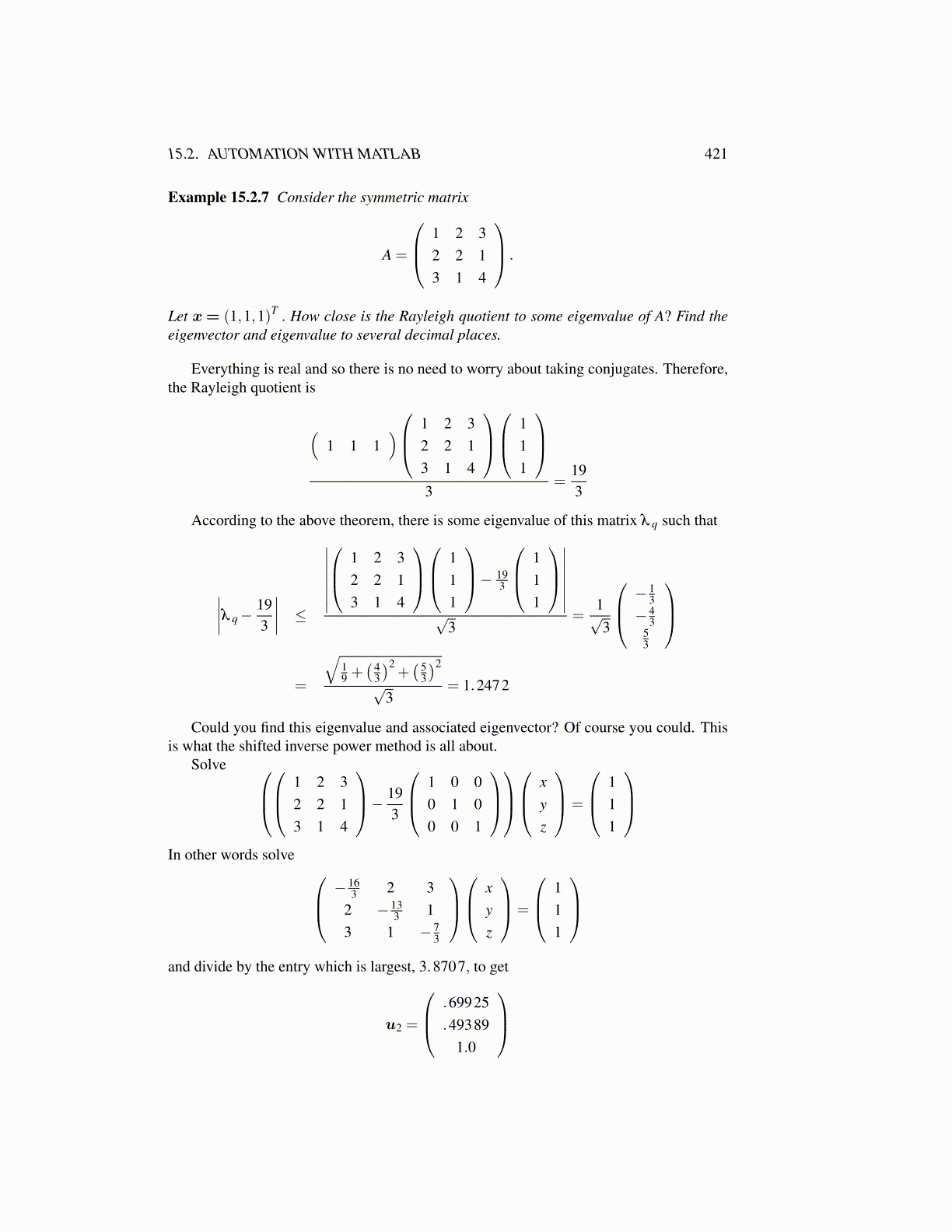
15.2. AUTOMATION WITH MATLAB 421
Example 15.2.7 Consider the symmetric matrix
A =
1 2 32 2 13 1 4
.
Let x= (1,1,1)T . How close is the Rayleigh quotient to some eigenvalue of A? Find theeigenvector and eigenvalue to several decimal places.
Everything is real and so there is no need to worry about taking conjugates. Therefore,the Rayleigh quotient is
(1 1 1
) 1 2 32 2 13 1 4
1
11
3
=193
According to the above theorem, there is some eigenvalue of this matrix λ q such that
∣∣∣∣λ q−193
∣∣∣∣ ≤∣∣∣∣∣∣∣ 1 2 3
2 2 13 1 4
1
11
− 193
111
∣∣∣∣∣∣∣
√3
=1√3
−13− 4
353
=
√19 +( 4
3
)2+( 5
3
)2
√3
= 1.2472
Could you find this eigenvalue and associated eigenvector? Of course you could. Thisis what the shifted inverse power method is all about.
Solve 1 2 3
2 2 13 1 4
− 193
1 0 00 1 00 0 1
x
yz
=
111
In other words solve −
163 2 3
2 − 133 1
3 1 − 73
x
yz
=
111
and divide by the entry which is largest, 3.8707, to get
u2 =
.69925.49389
1.0